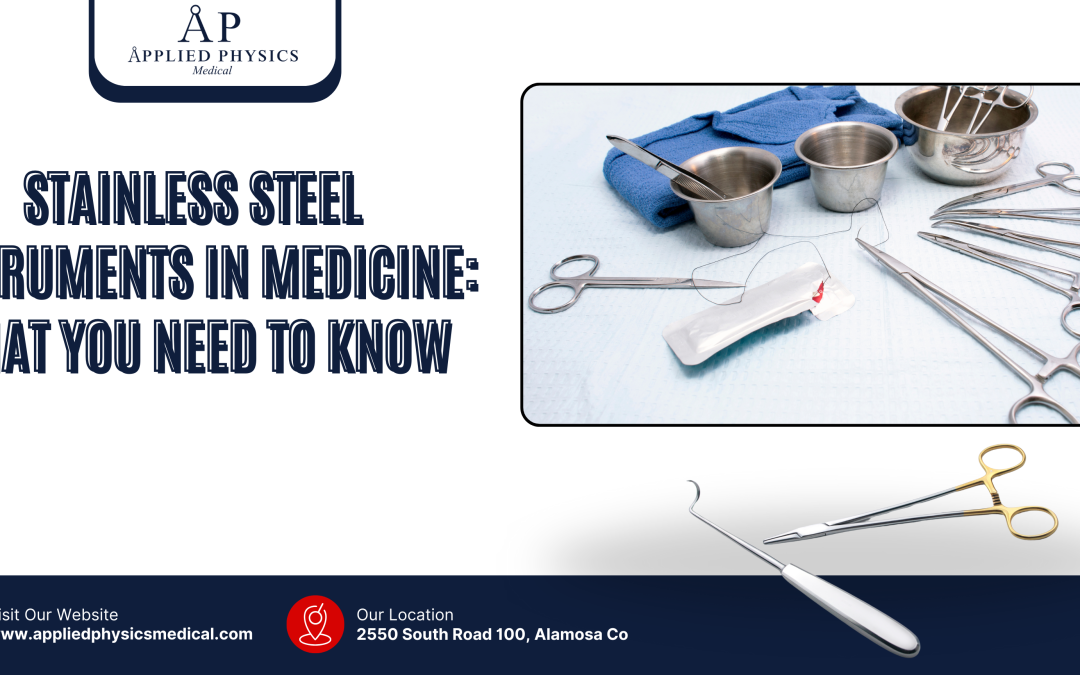Introduction
Stainless steel instruments have been a mainstay in the medical field for decades, and their advantages are numerous. Stainless steel’s durability and resistance to corrosion make it an ideal material for medical instruments that require frequent use and sterilization. This durability ensures that the instruments maintain their integrity and sharpness over time, reducing the need for frequent replacements and ultimately resulting in cost savings for medical practices.
Moreover, stainless steel is non-reactive, meaning it does not release harmful chemicals or substances into the body during medical procedures. This makes it a safe and reliable material for instruments that directly contact patients’ bodies. Additionally, stainless steel is easy to clean and sterilize, which is crucial for preventing the spread of infections and ensuring the safety of both patients and medical staff.
The precision and accuracy of stainless steel instruments are also critical in medicine. Whether it’s a scalpel for a delicate surgical procedure or forceps for a minor extraction, stainless steel instruments are designed to provide the exacting control and performance that medical professionals require. This precision is essential for ensuring successful outcomes in medical procedures, as even the slightest deviation can have significant consequences for patients.
Furthermore, the strength and rigidity of stainless steel instruments allow for greater control and stability during procedures, further enhancing their effectiveness in the medical setting. Overall, the benefits of using in medicine are multifaceted, encompassing durability, safety, precision, and reliability. These advantages make stainless steel instruments an essential component of any medical practice.
Key Takeaways
- Stainless steel instruments are widely used in medicine due to their durability, corrosion resistance, and ease of sterilization.
- The use of stainless steel instruments in medicine improves patient safety and outcomes by reducing the risk of infection and ensuring reliable performance during procedures.
- Proper sterilization and maintenance of stainless steel medical instruments are crucial to prevent the spread of infections and maintain their effectiveness.
- Stainless steel instruments are versatile and can be used in a wide range of medical procedures, including minimally invasive surgery, due to their strength and precision.
- Advancements in stainless steel instrument technology continue to improve their performance and usability in medical practices, making them an essential tool for healthcare professionals.
The Importance of Sterilization and Maintenance for Stainless Steel Medical Instruments

Sterilization and proper maintenance of stainless steel medical instruments are essential in healthcare settings to prevent infections and ensure patient safety. Stainless steel instruments, such as scalpels, forceps, and scissors, are preferred due to their durability, corrosion resistance, and ease of sterilization.
Regular cleaning, disinfection, and sterilization processes remove any biological material and prevent the spread of bacteria, viruses, and fungi. High standards of cleanliness in operating rooms or clinics help maintain sterile conditions, reducing the risk of post-operative infections. Additionally, well-maintained instruments ensure precision in medical procedures, as rust or damage could compromise their effectiveness.
Sterilizing stainless steel medical instruments is critical to prevent infections and ensure patient safety. These instruments are chosen for their durability and resistance to corrosion. Proper cleaning and maintenance remove any contaminants, stopping the spread of harmful microbes. This process is key in maintaining sterile conditions in clinics and hospitals. Well-maintained tools also ensure accuracy and reliability during medical procedures
Sterilization: A Critical Step in Medical Instrument Use
Sterilization is a critical step in the use of medical instruments, as it eliminates any potential pathogens or contaminants that could pose a risk to patients. Are designed to withstand high-temperature sterilization methods such as autoclaving, which effectively kills bacteria, viruses, and other microorganisms that may be present on the instruments. This ensures that the instruments are safe for use in medical procedures and minimizes the risk of infections or complications for patients.
Maintenance: Preserving Instrument Integrity and Performance
In addition to sterilization, proper maintenance of is crucial for preserving their integrity and performance. Regular cleaning and inspection of the instruments can help identify any signs of wear or damage, allowing for timely repairs or replacements as needed. This proactive approach to maintenance not only extends the lifespan of the instruments but also ensures that they continue to meet the high standards of quality and safety required in the medical field.
Cost Savings and Long-Term Benefits
Ultimately, the importance of sterilization and maintenance for stainless steel medical instruments cannot be overstated, as these practices are essential for upholding the safety and efficacy of medical procedures. Furthermore, proper sterilization and maintenance also contribute to cost savings for practices. By ensuring that the instruments remain in optimal condition through regular cleaning and inspection, healthcare facilities can minimize the need for costly repairs or replacements. Additionally, effective sterilization practices reduce the risk of infections and complications in patients, which can result in significant savings by avoiding extended hospital stays or additional treatments.
Conclusion
stainless steel instruments play a vital role in the field due to their unmatched durability, corrosion resistance, and precision. They ensure patient safety by maintaining sterility and minimizing infection risks. Easy to clean and sterilize, these instruments support consistent performance across various medical procedures. Their reliability and cost-effectiveness make them indispensable tools for healthcare professionals. Continued advancements in their technology promise even greater efficacy and usability in the future.

